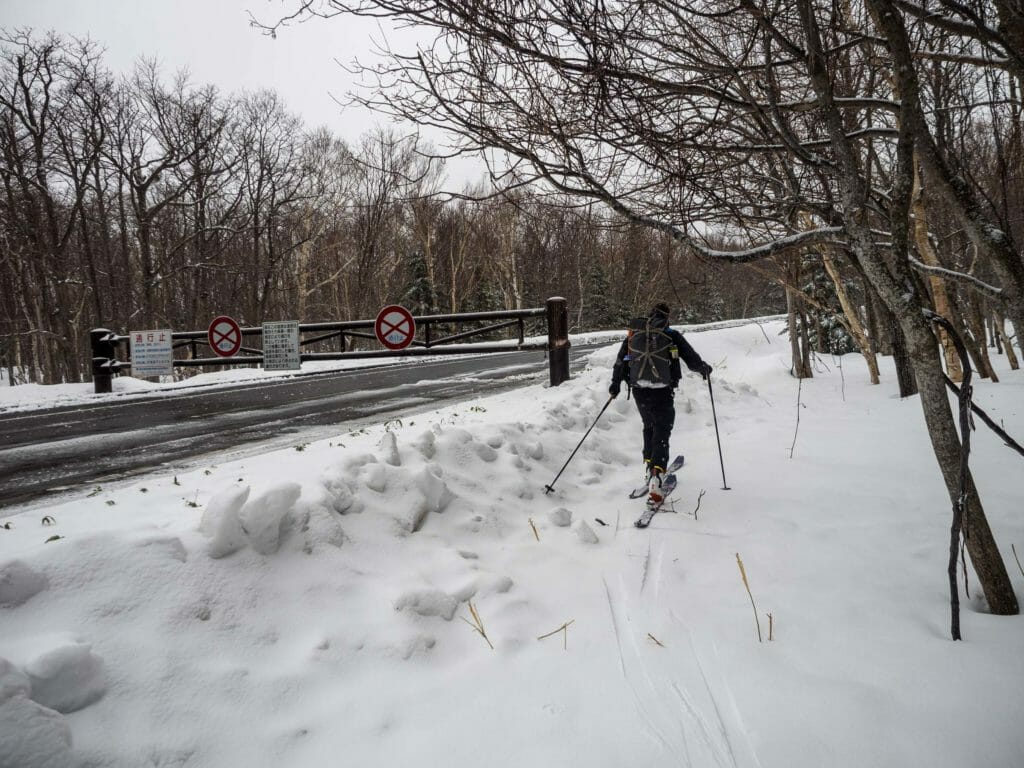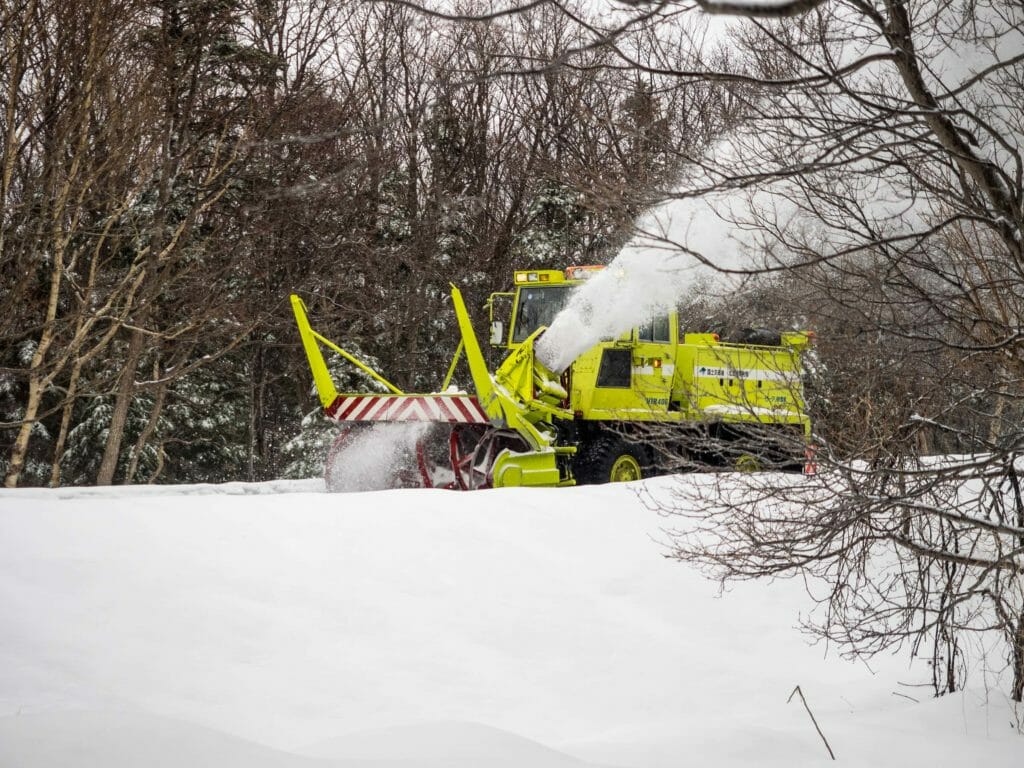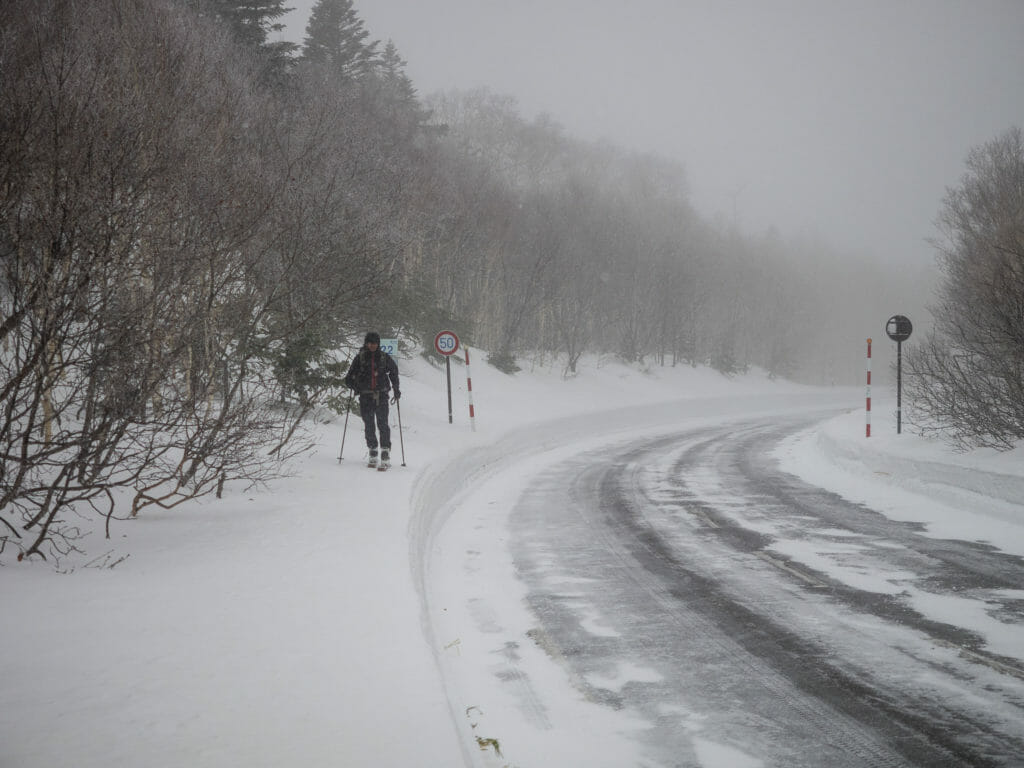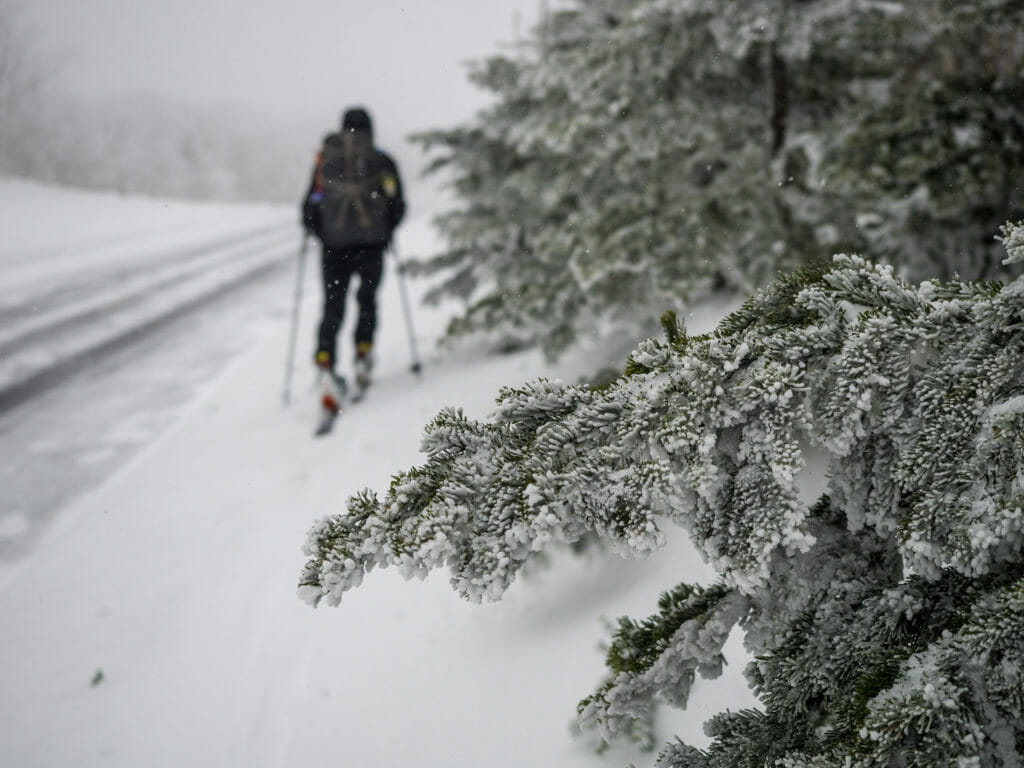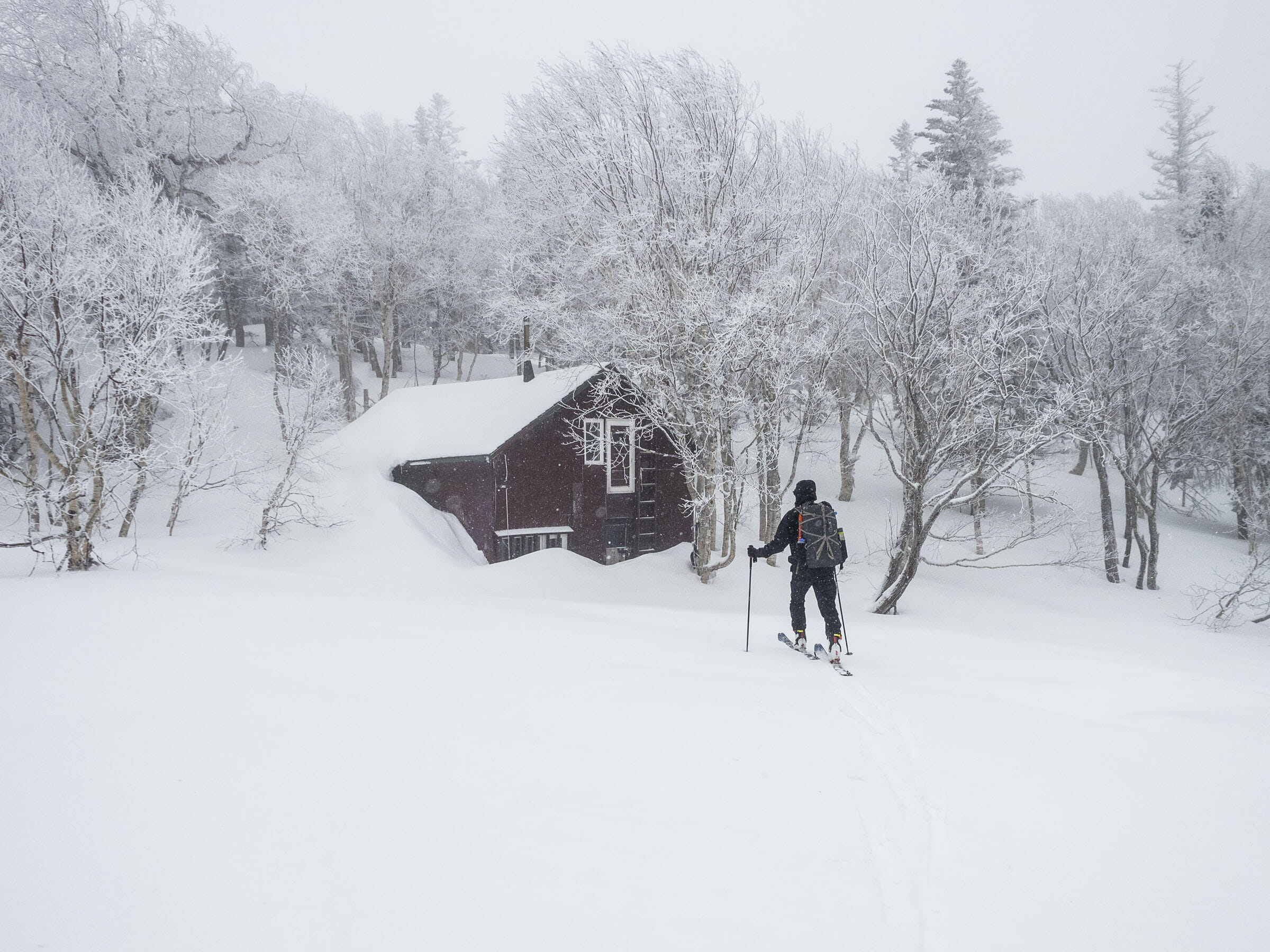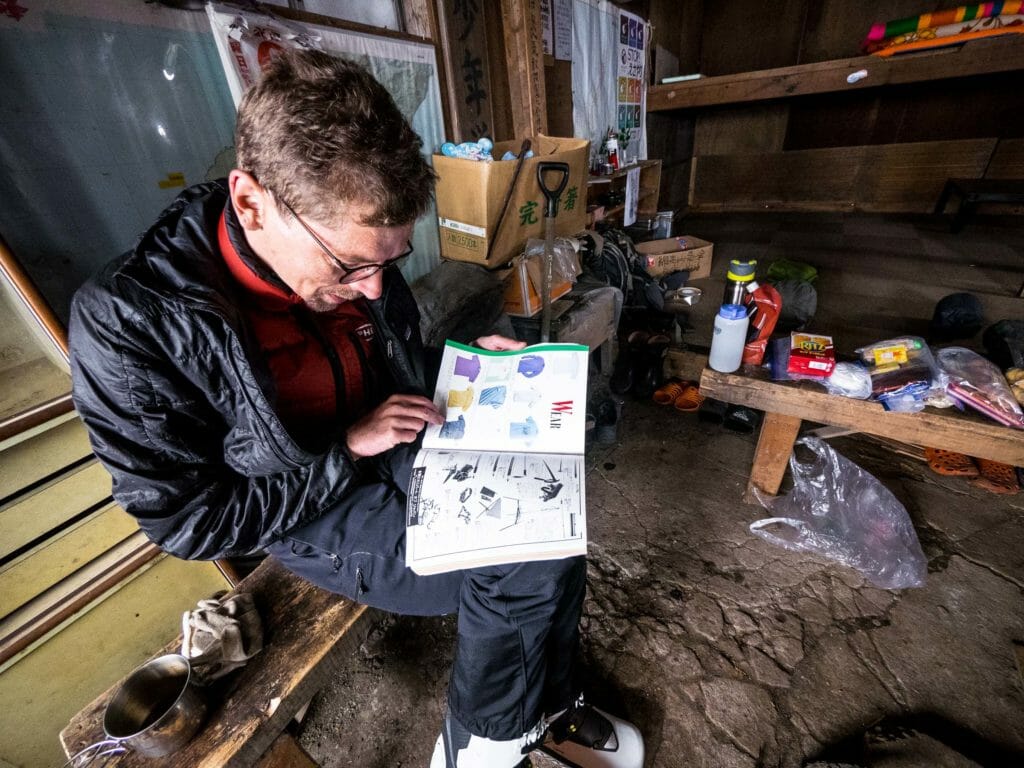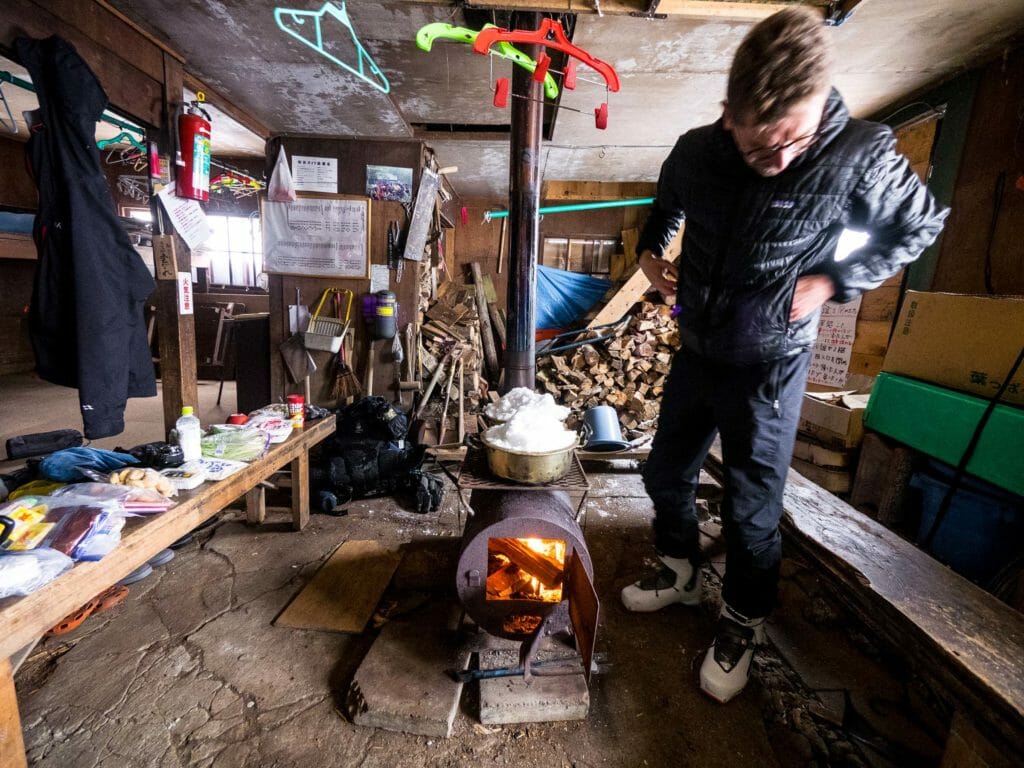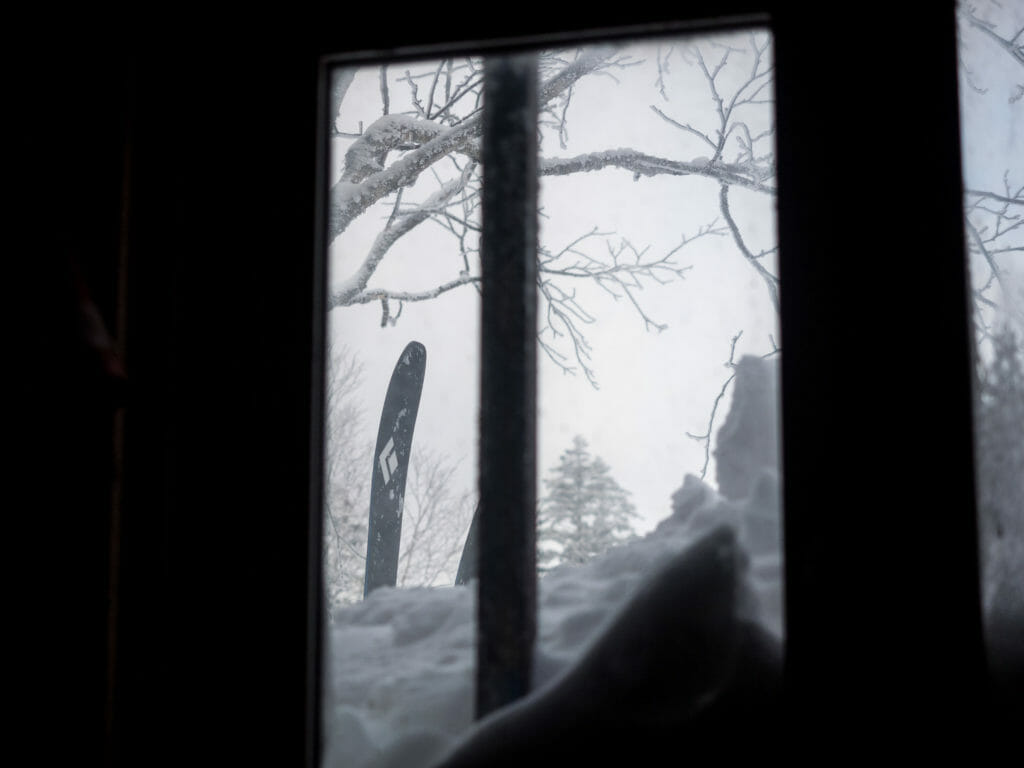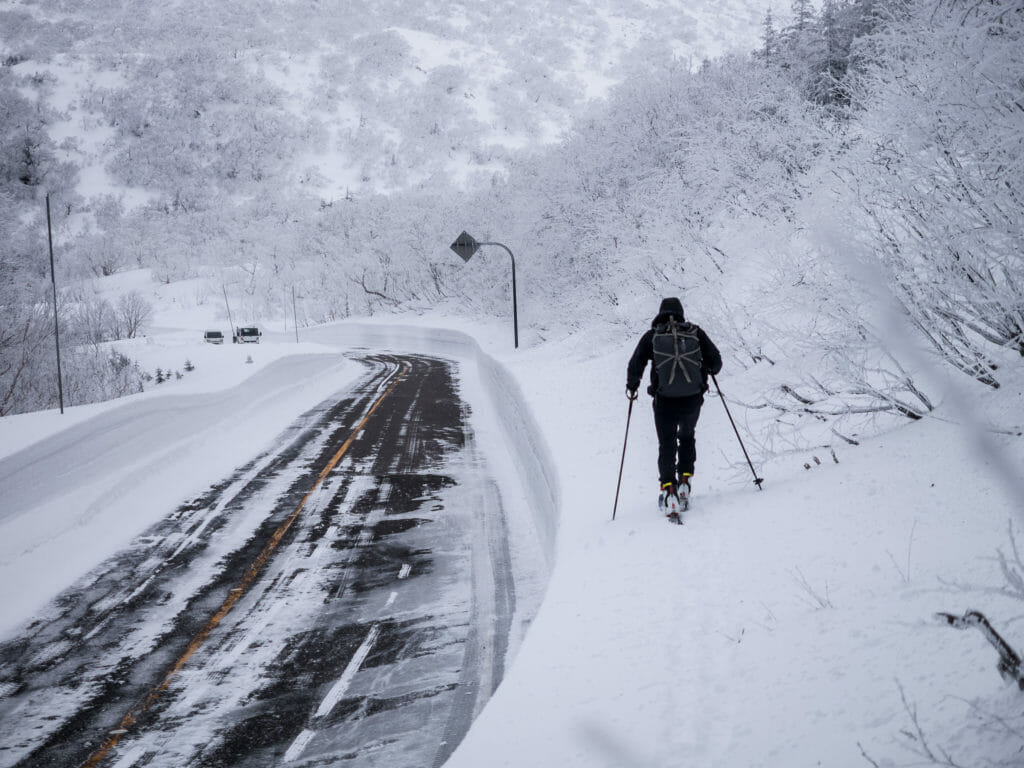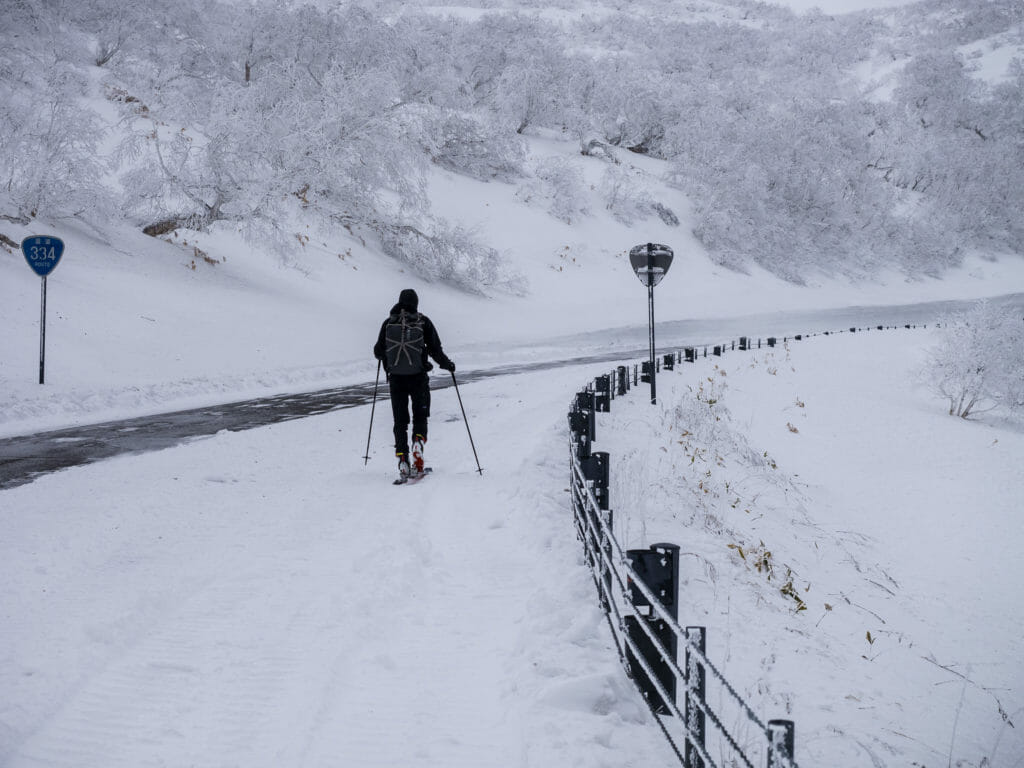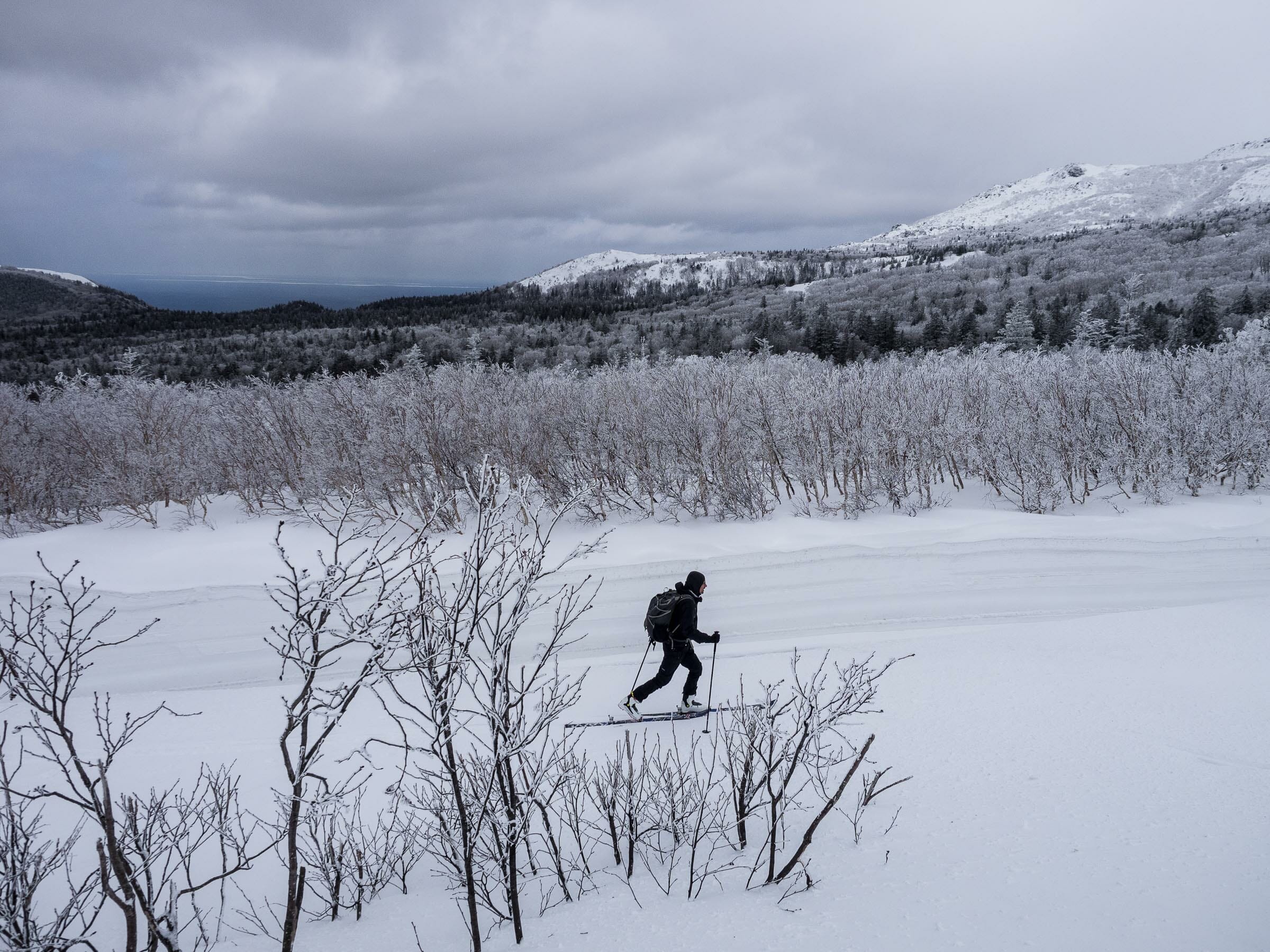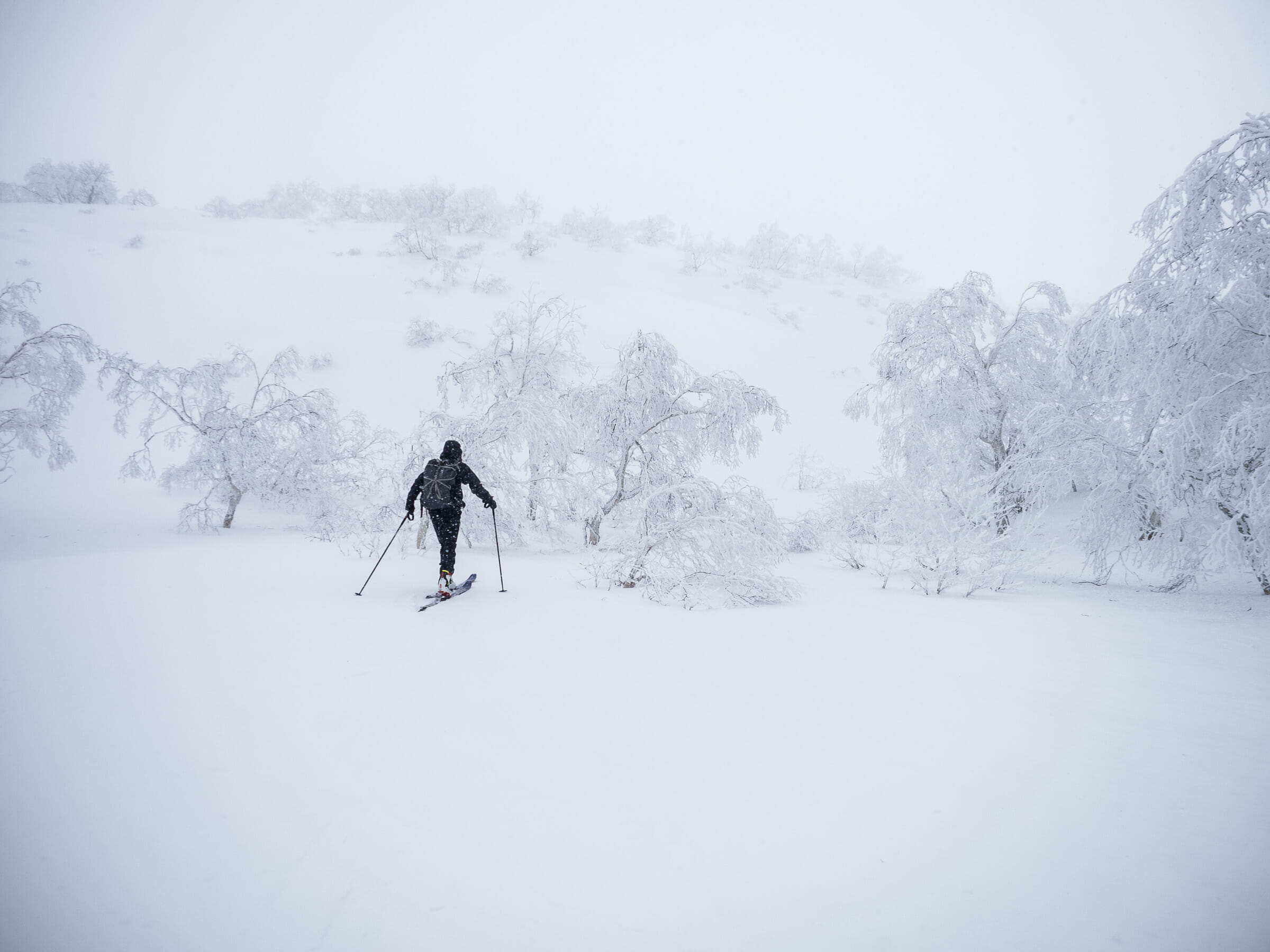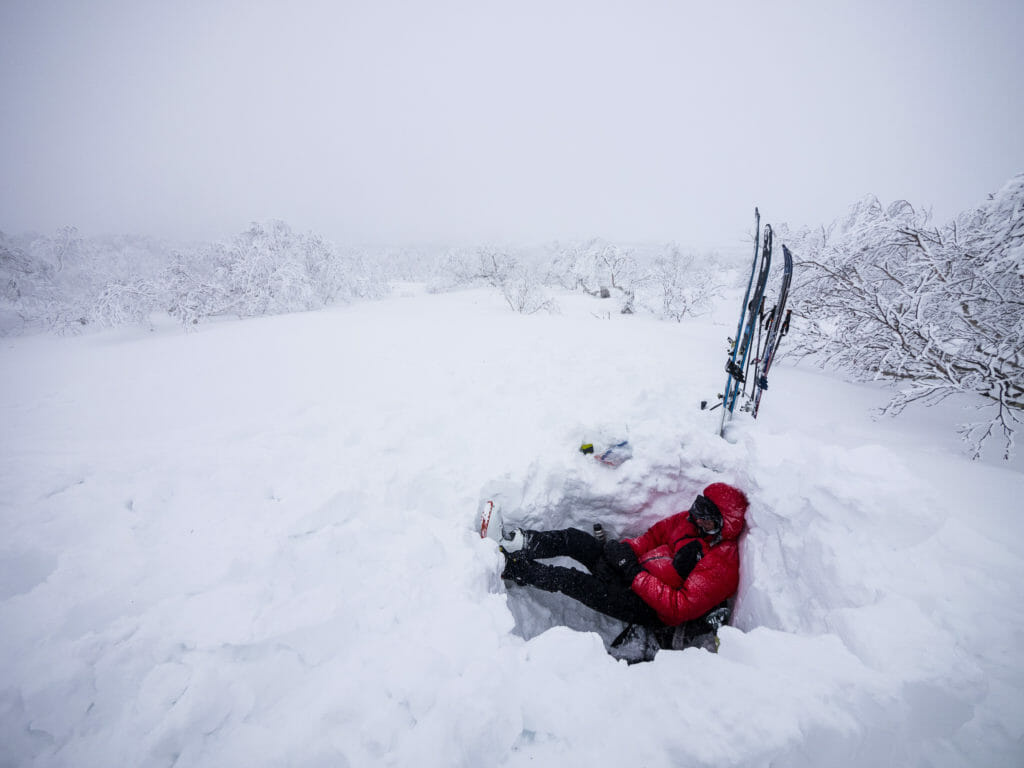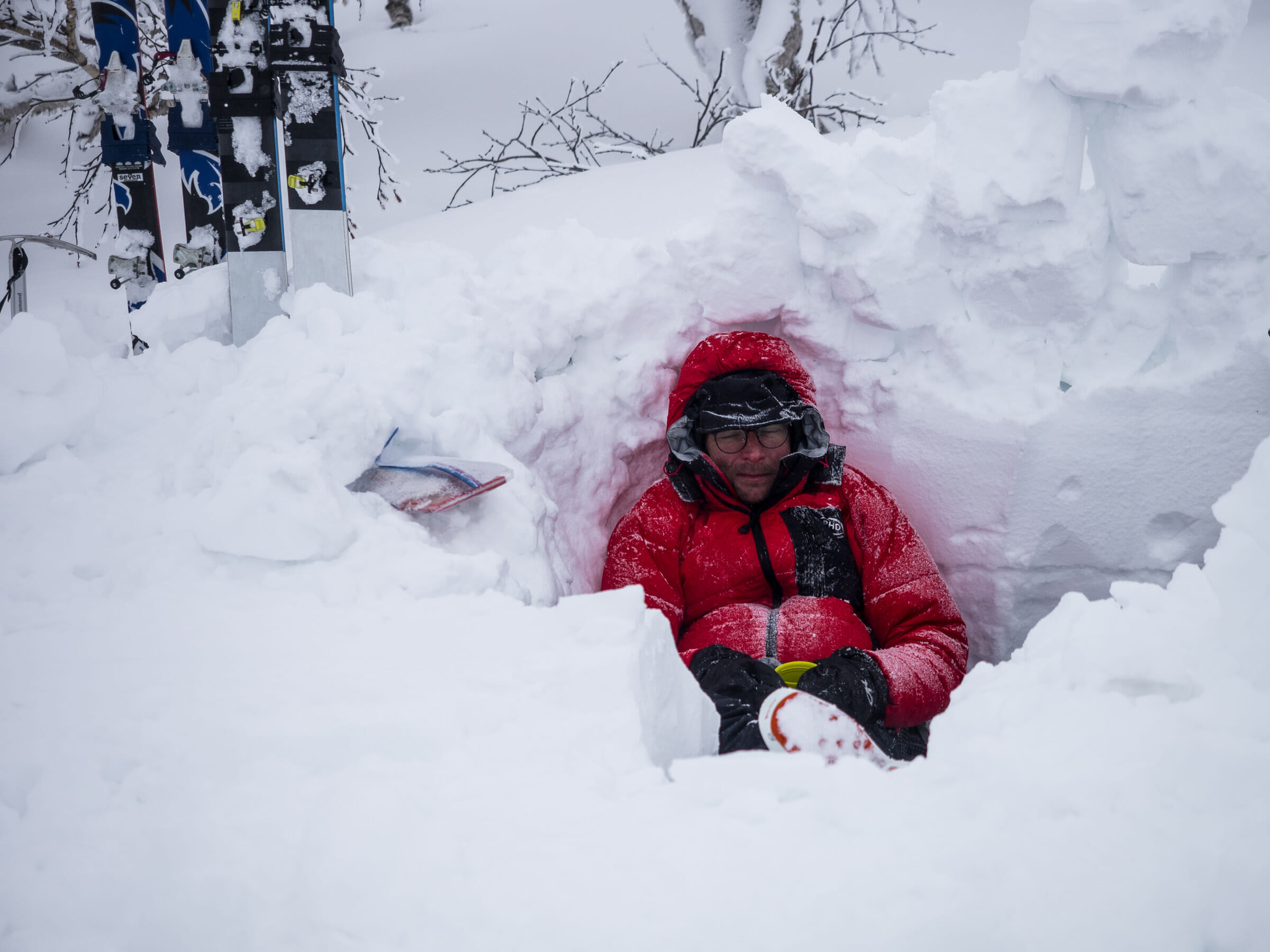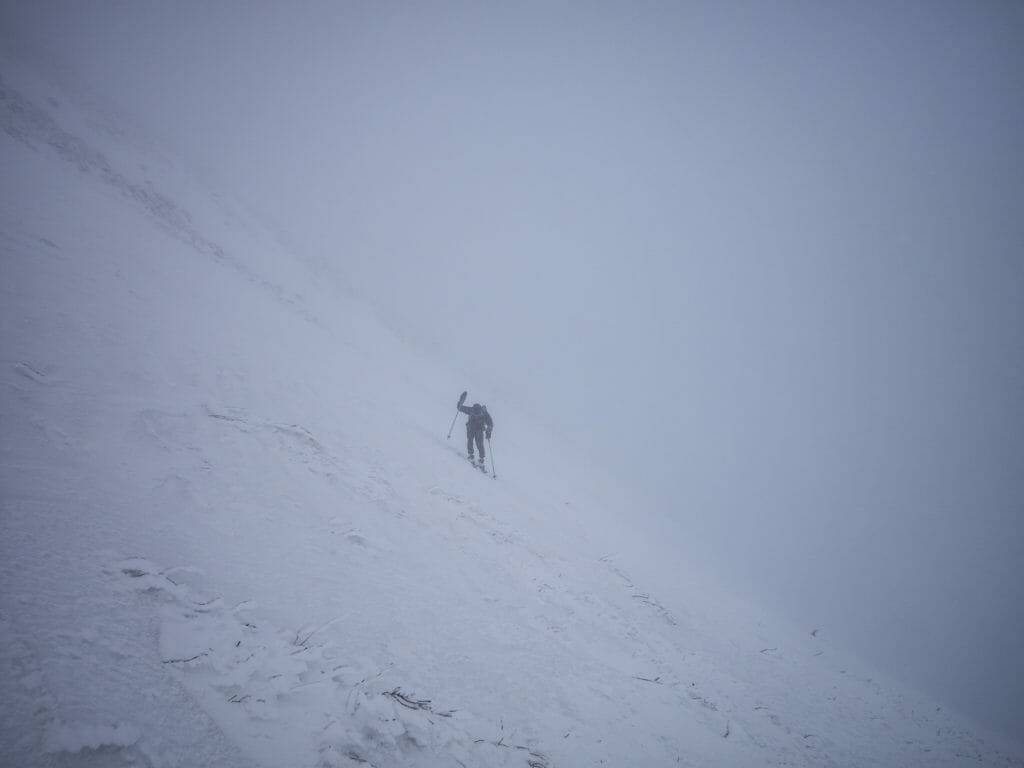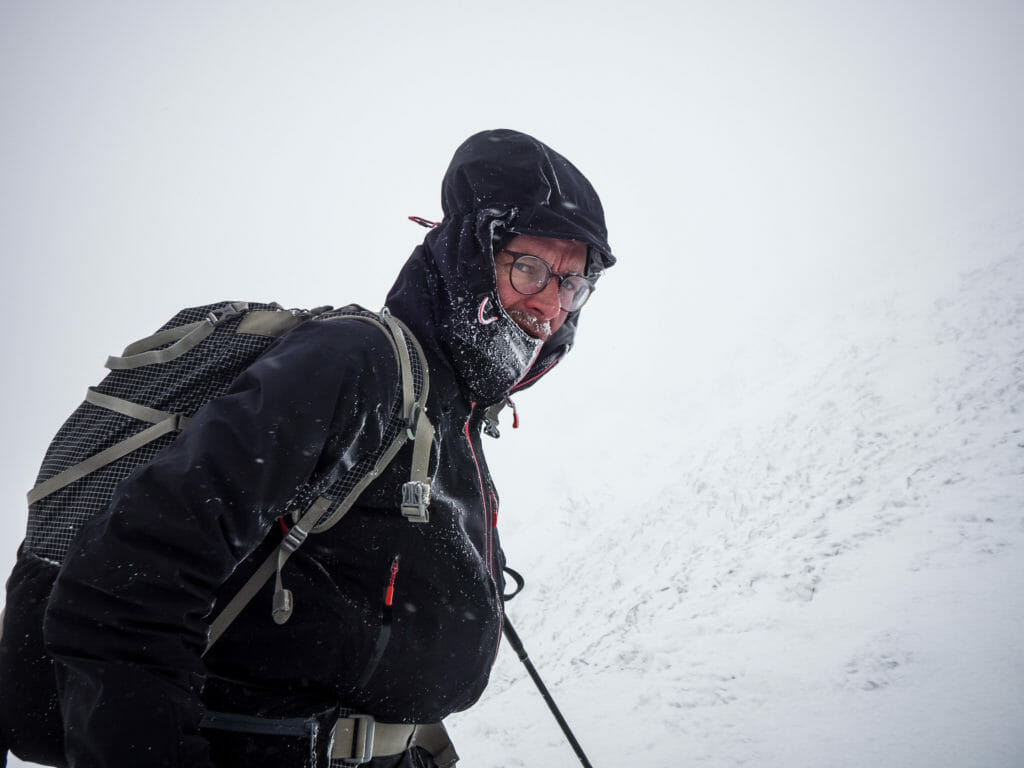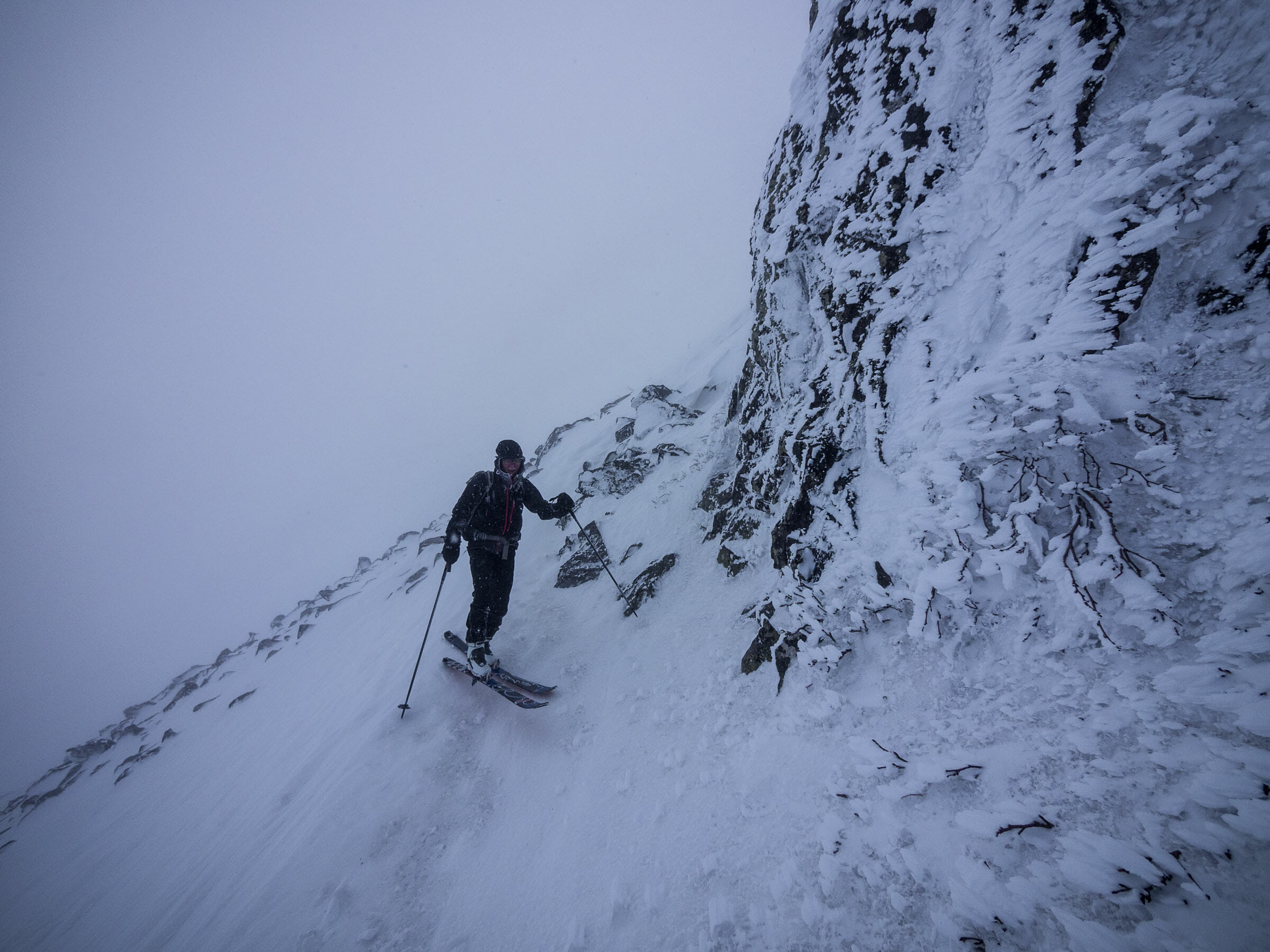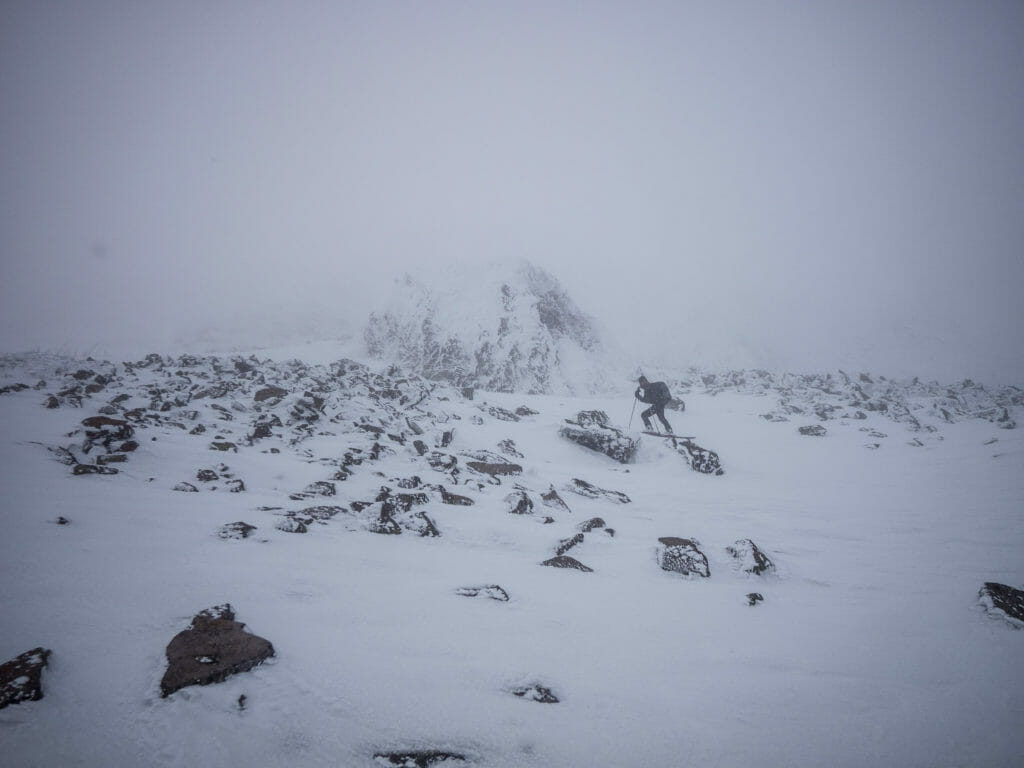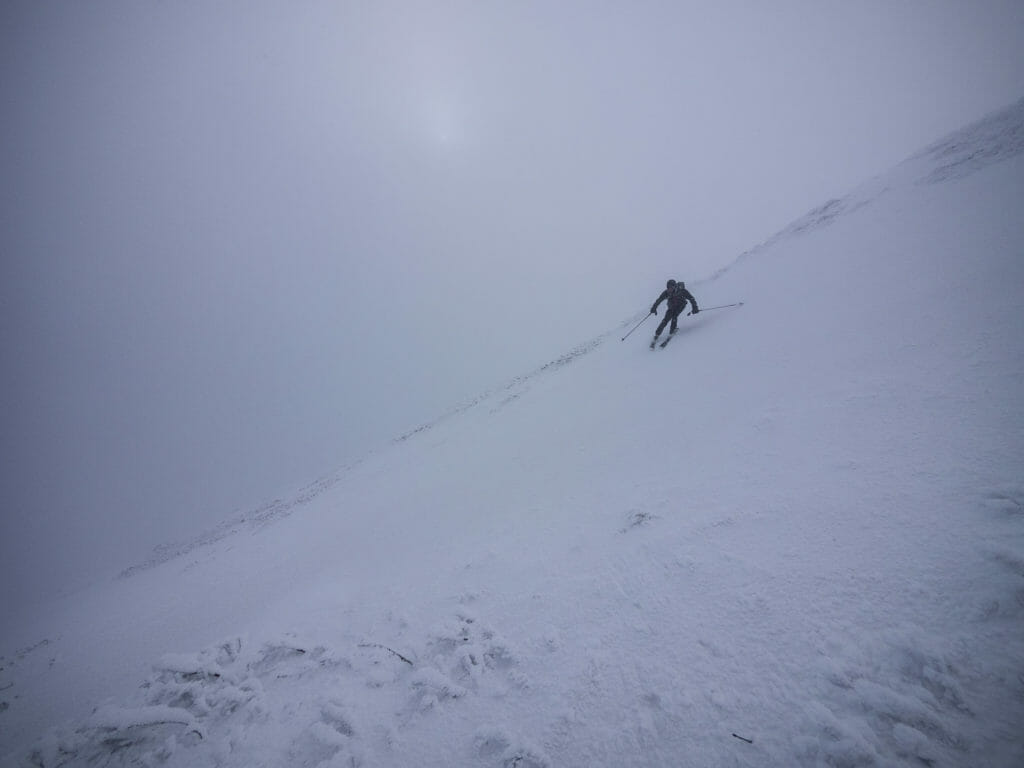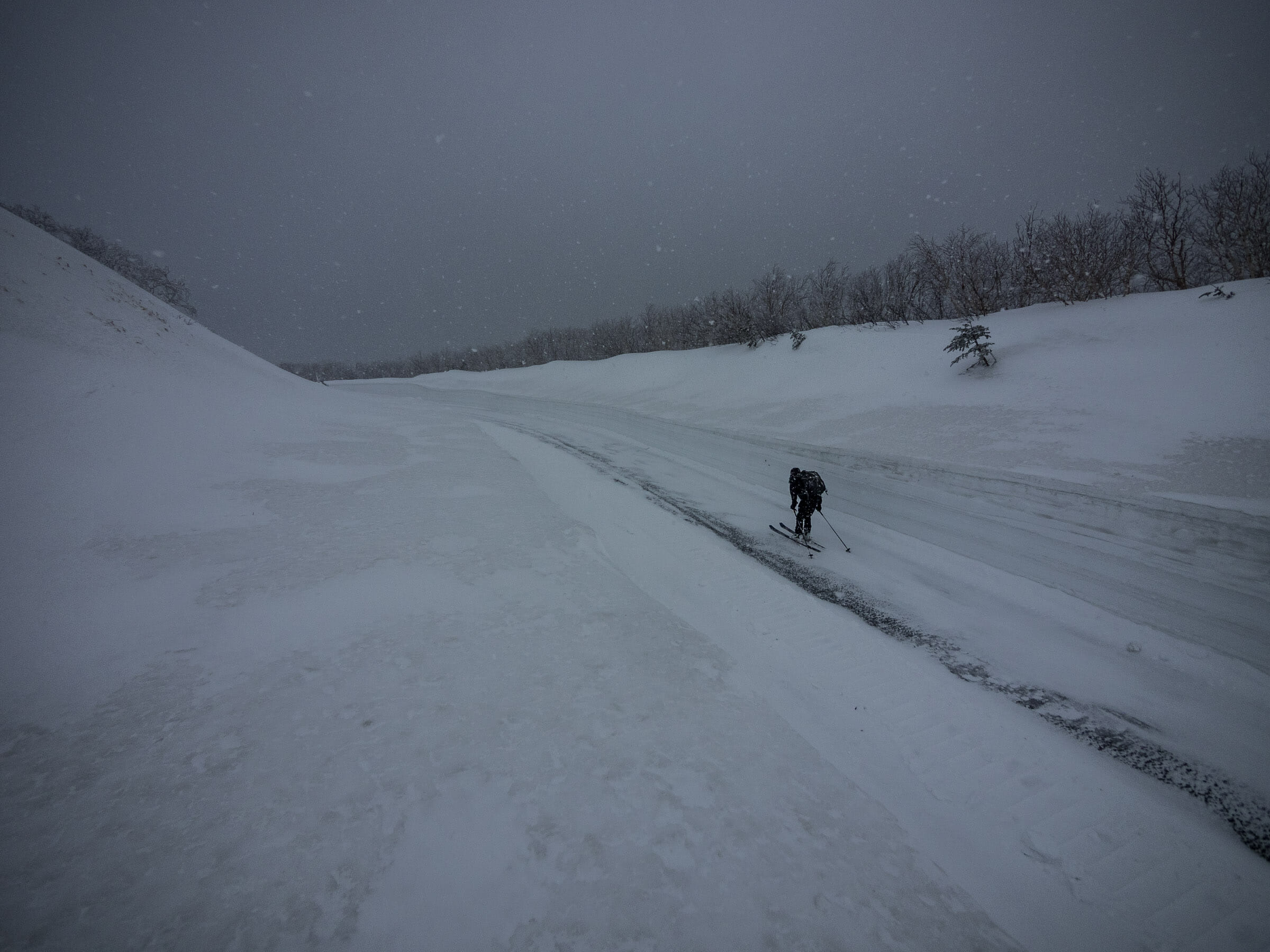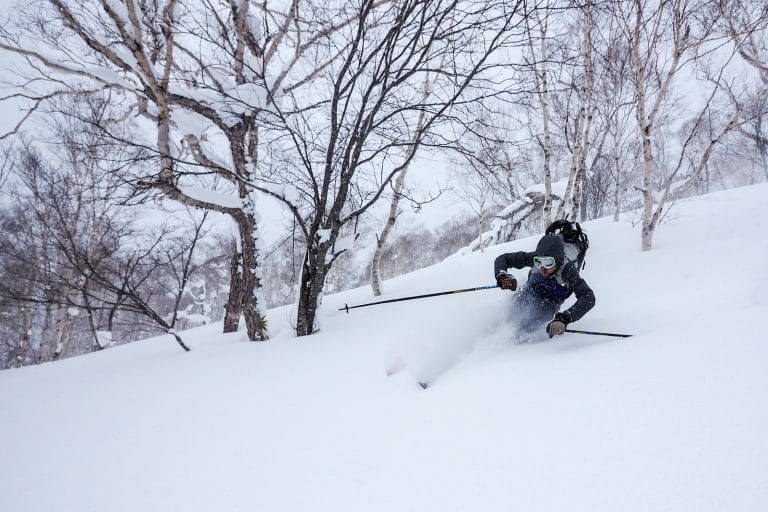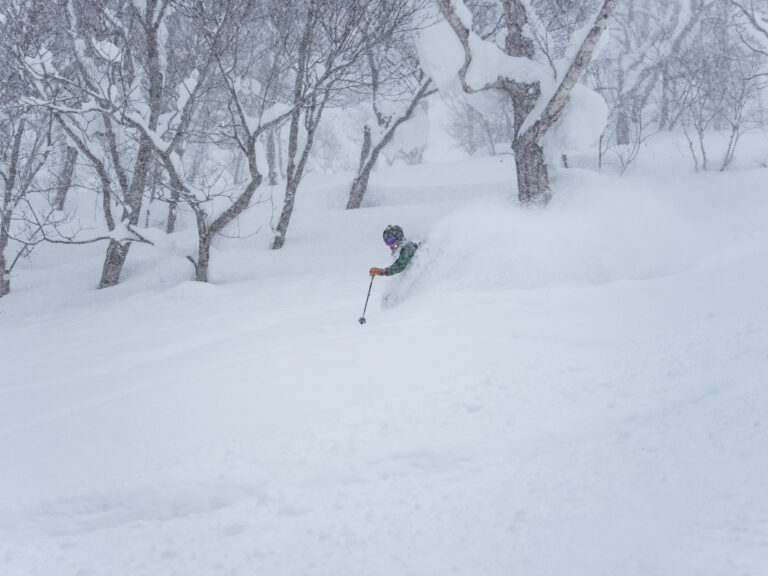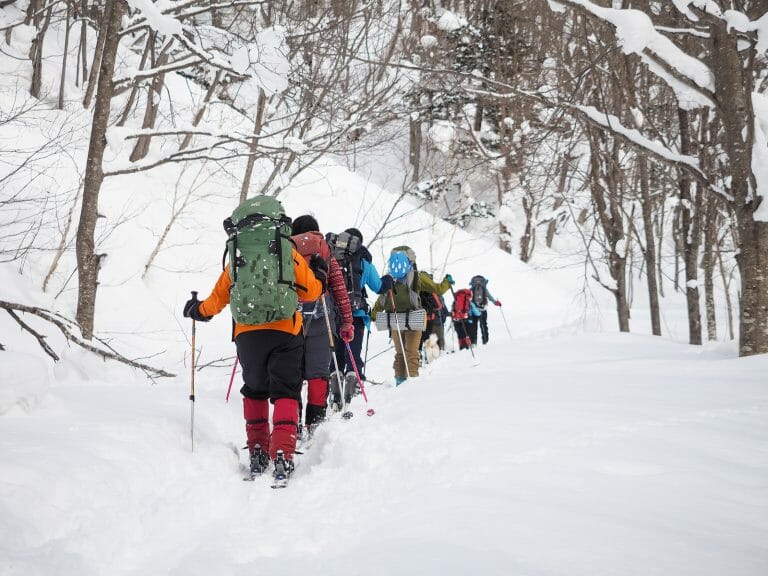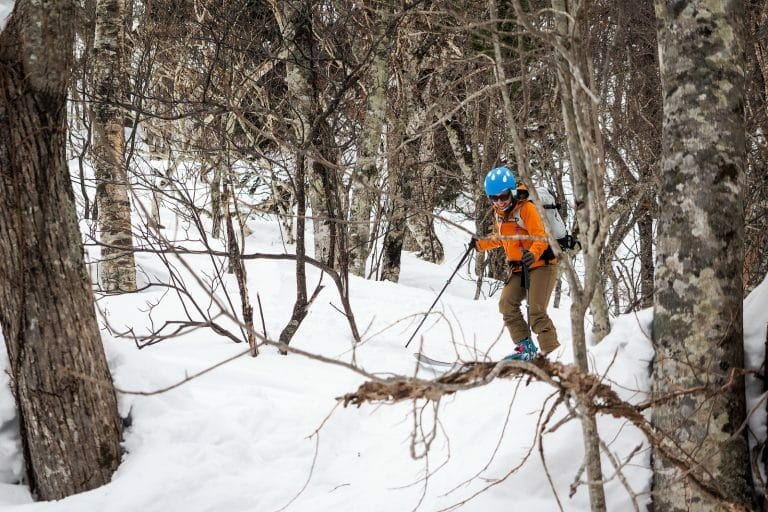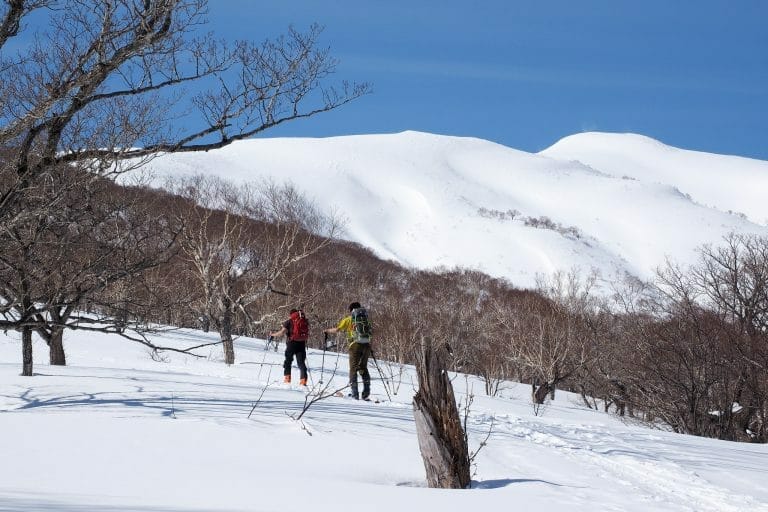We never made it to the top of Rausu-dake, nor anywhere near the summit. A large cliff-like boulder, here just below the couloir, was as far as we’d go after battling strong wind, low visibility, icy surfaces, and even sitting in a snow-hole for 2 hours waiting for a forecasted break in the weather. In the weeks leading up to the trip, we’d dreamed of weather and conditions like this, but it was not to be. we cut our losses, and made do with the satisfaction of staying in one of Hokkaido’s easternmost mountain huts.
We’d skinned up from the Shiretoko Nature Center to the Aizanso Hut the previous day. The road crews were already almost at the top of the pass, getting the road cleared ready for the public in late April. It must be a huge undertaking to get the road ready, after meters upon meters of snowfall.
We settled in for a quiet night of stoking the fire, eating, and reading the retro mountain gear catalogues from the late 1980’s.
We knew from the previous day’s forecast that our summit attempt day was going to be pea soup. 100km/hr gusts were forecast for the early morning, with a decent amount of snowfall too. The afternoon’s cloud cover forecast on Windy.com was for the same as the morning – low and thick. But from around 2pm the wind and snow was supposed to die down considerably. So we delayed our departure from the hut to 10am.
A number of coffees later, we dragged ourselves into the brisk wind, and started on our way up the mountain. It was dark and overcast, but the cloud cover was just high enough to allow a view northwest to the coast, where some whisps of sea ice still remained. We weren’t too confident of our chances at reaching the summit, but if we could get a glimpse of the couloir, that’d be nice.
It was quite the curious sensation skinning up a pass that Haidee and I had on a number of occasions cycled across. Once in dismal rain and wind, and once in glorious sunshine, where we actually had magnificent views of Rausu-dake and the Southwest Couloir, albiet in summertime.
From the road we started up the narrow gully, and soon made the decision to gain our altitude gradually along the stream’s wide plateau, rather than try to zig-zag up the icy face above the road. We’d already switched to ski crampons…this was not a particularly promising start. The ice-caked shrub lands were beautiful though, and almost completely void of wind.
We’d only been on the skis for less than 2 hours when we decided to stop for a long break, to give the weather a chance to clear up. It was almost noon, and time for lunch anyway. I dug a two-person snow hole to get us out of the wind, and this kept us snug for a restful two hours or so. Thank modern technology for the invention of the insulated water bottle! (And thick down parkas).
Quentin finally dragged me out of hole at 2pm, for a final blat up the slope to see what we could see. We saw not much of anything at all. Only a decent amount of exposed haimatsu low pines, rimed icy slopes, and a foggy 50m visibility. We fought the good fight, and after far too many icy traverses where only the ski crampons were making purchase, we decided to pull the plug. It was almost 4pm anyway, and we’d soon be losing light. The plan was to return to the Nature Center today, so even if we got back to the hut with daylight remaining, we’d certainly be skiing down the road in the dark.
We found a relatively safe flat patch of wind-blown snow at the base of a large cliff-like boulder, and wrestled with our skins in the wind. Survival skiing ensued, trying to dodge the lurking pines as we scraped and rattled across the frozen surface.
We got back to the hut safe and sound, and scoffed some food before starting the 7km dusk and then night descent back to the car. We both risked skiing on the road, which had perhaps 2cm of fresh powdery snow on the surface. Sharks lurked, however, and I pulled a muscle trying to stop myself on more than one occasion being lurched into the blacktop. The hostel in Utoro was a sight for sore eyes, as was the onsen soak after a hairy two days on the mountain.









